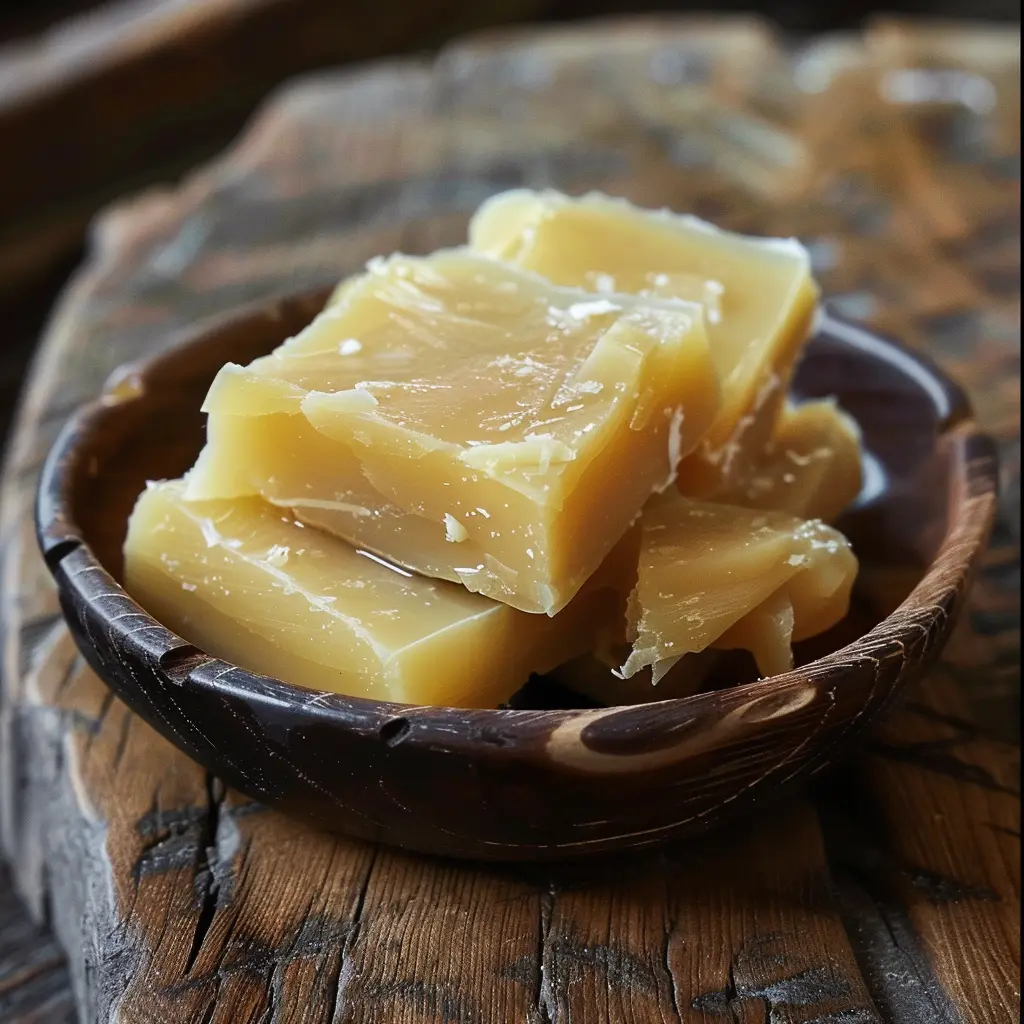Introduction
Beef tallow, the rendered form of beef fat, has been a staple in culinary practices around the world for centuries. Known for its high smoke point and unique flavor, it plays a crucial role in various cooking methods. This article explores the longevity of beef tallow, factors that affect its shelf life, and best practices for storage to ensure it remains fresh and usable for as long as possible.
Understanding Beef Tallow
What is Beef Tallow?
Beef tallow is a type of rendered fat that comes from beef. It is produced by heating chunks of beef fat, typically from around the kidneys and heart, in a process called rendering. This process separates the fat from the meat, connective tissue, and water, leaving behind a clear, solid fat once cooled. Beef tallow has been used traditionally in cooking and for making candles, soaps, and even skin care products due to its high stearic acid content, which is known for its stable properties.
History and Uses of Beef Tallow
Historically, beef tallow was a common cooking fat before the widespread use of vegetable oils. It was particularly prized for its high smoke point and ability to add flavor and crisp texture to foods like fried dishes. Beyond the kitchen, tallow has been an important ingredient in the production of soap and candles, providing a hard, long-lasting base. In recent years, it has seen a resurgence in popularity in the culinary world, especially among proponents of traditional and whole-foods diets, as well as in the “nose-to-tail” eating philosophy that advocates for using all parts of the animal.
The Shelf Life of Beef Tallow

Factors Influencing Beef Tallow’s Shelf Life
Storage Conditions
The shelf life of beef tallow can be significantly influenced by how it is stored. For optimal longevity, tallow should be kept in a cool, dark place and in an airtight container to prevent oxidation and microbial growth. Exposure to heat, light, or air can accelerate the rancidity process, reducing its shelf life.
Purity and Processing Methods
The purity of the tallow and the methods used in its processing also play crucial roles in determining its shelf life. Tallow that has been minimally processed and is free from impurities tends to have a longer shelf life. Moreover, if the tallow is well-filtered and rendered at the correct temperatures, it can remove impurities that might otherwise accelerate spoilage.
Signs of Spoilage in Beef Tallow
Beef tallow that is going bad will typically change in appearance, smell, and texture. Signs of spoilage include:
- An off-putting smell: Fresh tallow should have a clean, mildly fatty scent. Any sour or rancid odors are indicators of spoilage.
- Changes in color: While fresh tallow is generally creamy white, any yellowing or darkening could suggest it is turning rancid.
- Texture changes: If the tallow becomes overly soft or shows signs of mold growth, it should no longer be used.
By understanding these aspects of beef tallow, you can better manage its use in culinary applications and ensure its benefits are maximized while minimizing waste.
Storing Beef Tallow for Maximum Freshness
Best Practices for Storing Beef Tallow
Temperature Considerations
Temperature plays a crucial role in preserving the quality of beef tallow. Ideally, it should be stored in a cool environment, with temperatures ranging from just below room temperature to refrigerated conditions. This helps to maintain its consistency and prevents it from becoming rancid prematurely.
Container Types
The choice of container is also vital for maintaining the freshness of beef tallow. Keep it in a sealed container to reduce contact with air, which can speed up oxidation and lead to spoilage. Glass jars with tight-fitting lids are ideal because they do not impart any unwanted flavors and prevent air from coming into contact with the tallow.
Refrigeration vs. Room Temperature Storage
While beef tallow can be stored at room temperature for several months without spoiling, refrigeration can extend its shelf life even further, making it last for up to a year or more. Storing tallow in the refrigerator is particularly recommended in warmer climates or during hot weather when room temperatures can often exceed the ideal storage temperature for fats.
Uses of Beef Tallow in Cooking and Beyond
Culinary Uses of Beef Tallow
Frying with Beef Tallow
Beef tallow is highly regarded for frying due to its high smoke point and ability to impart a rich flavor and crispy texture to foods. It is traditionally used for frying potatoes and making high-quality French fries, but it can also be used for frying meats and other vegetables.
Baking with Beef Tallow
In baking, beef tallow can be used as a substitute for butter or shortening. It is particularly useful in recipes where a slightly savory flavor is desired. Tallow can be used to create flaky pastries and pies, and it contributes to a rich, tender crumb in breads and other baked goods.
Non-Culinary Uses of Beef Tallow
Beef Tallow in Skincare
Beef tallow contains fats that are similar to those naturally found in human skin, making it a nourishing addition to homemade skincare products. It is used in the production of soaps, lotions, and balms, providing moisturizing properties and aiding in skin repair.
Industrial Applications of Beef Tallow
Beyond cooking and skincare, beef tallow has various industrial uses. It is used as a base for some biofuels, in the production of lubricants, and as an ingredient in some manufacturing processes that require sturdy, long-lasting fats. Its versatility makes it a valuable commodity in different sectors beyond the kitchen.
Health Aspects of Beef Tallow
Nutritional Benefits of Beef Tallow
Saturated vs. Unsaturated Fats
Beef tallow primarily consists of saturated and monounsaturated fats. It contains a high proportion of saturated fats, which can contribute to its stability and high smoke point. However, dietary guidelines generally recommend moderate consumption of saturated fats due to their association with heart health issues. Monounsaturated fats, also present in beef tallow, are considered healthier for heart health.
Vitamins and Minerals in Beef Tallow
Beef tallow is a source of fat-soluble vitamins such as vitamin E, which is an antioxidant, and vitamins A, D, and K2, which are vital for many body functions including vision, bone health, and blood coagulation. Additionally, it contains trace amounts of essential minerals like selenium and zinc, which support immune function and overall health.
Potential Risks Associated with Beef Tallow
While beef tallow can be a flavorful addition to a balanced diet, it’s important to be aware of its high saturated fat content. Excessive consumption of saturated fats is linked to increased risk of heart disease and high cholesterol levels. Thus, it should be used in moderation, especially for those with heart health concerns.
How to Make Beef Tallow at Home
Ingredients Needed
Beef fat trimmings (preferably from organic, grass-fed beef)
- Water
- A large pot or slow cooker
- Strainer or cheesecloth
- Storage containers (e.g., glass jars)
Step-by-Step Process
Prepare the Fat:

Start by chopping the beef fat into small pieces. This increases the surface area and helps the fat render down faster.
Start Rendering:
- Place the chopped fat into a large pot or slow cooker. Add a small amount of water to help prevent the fat from burning as it begins to melt. The water will evaporate during the cooking process.
- Cook on low heat. The goal is to slowly melt the fat while allowing the impurities to separate.
Simmer and Skim:
Allow the fat to simmer gently for several hours. As it cooks, impurities and meat bits will rise to the surface. Skim off these impurities periodically to ensure the clarity and purity of the tallow.
Strain the Tallow:
Once the fat has fully rendered and no more impurities rise to the top, remove the pot from heat. Let it cool slightly, then strain through a cheesecloth or fine-mesh strainer into clean containers. Straining multiple times may be necessary to remove all solids.
Cool and Store:
Allow the tallow to cool to room temperature, then seal the containers and store them in the refrigerator or freezer. In the fridge, beef tallow can last for many months, and it can be kept even longer when frozen.
By following these steps, you can create your own high-quality beef tallow at home, ready to be used in various recipes or even for homemade skincare products.
Frequently Asked Questions
How Long Can Beef Tallow Be Stored in the Freezer?
Beef tallow can be stored in the freezer for an extended period, typically up to a year, without significant loss of quality. When frozen, the low temperatures halt the oxidation process, significantly slowing down any potential spoilage. For optimal storage, ensure the tallow is sealed in an airtight container or freezer-safe bag to prevent freezer burn and odor absorption from other foods.
Can Spoiled Beef Tallow Be Salvaged?
Once beef tallow has spoiled, it is not advisable to try to salvage it. Signs of spoilage include an unpleasant odor, off taste, and a change in color (typically darker or yellowish). Using spoiled tallow can impart off flavors to food and may pose health risks due to the oxidation and possible microbial growth. It is best to dispose of spoiled tallow to avoid any food safety issues.
Differences Between Beef Tallow and Other Fats
Beef tallow differs from other fats in several ways, primarily in its fat composition and melting point. Tallow is high in saturated fats, which gives it a high smoke point and makes it ideal for high-heat cooking like frying. Compared to plant-based fats like olive oil or coconut oil, tallow is less rich in polyunsaturated fats, making it more stable for cooking at high temperatures without breaking down and forming harmful free radicals. Compared to lard (pork fat), tallow generally has a higher melting point and a different flavor profile, which can affect the taste and texture of food.
Conclusion
Summary of Key Points
Beef Tallow Storage: Beef tallow can be stored in the freezer for up to a year, maintaining its quality if kept in an airtight container.
Spoilage: Once spoiled, beef tallow cannot be salvaged and should be discarded to prevent potential health risks.
Comparison with Other Fats: Beef tallow is unique in its high content of saturated fats and stability at high temperatures, making it suitable for high-heat cooking methods such as frying.
Future Trends in Beef Tallow Usage
The use of beef tallow may see varying trends in the future, influenced by dietary preferences and sustainability concerns. As interest in traditional and nose-to-tail cooking increases, so might the use of beef tallow, particularly among those seeking to utilize all parts of the animal. Additionally, as consumers become more health-conscious, there might be a balanced approach to using beef tallow, considering its benefits and risks in a diet. In industries outside of food, tallow’s role in sustainable biofuels and biodegradable products could lead to increased usage, contributing to environmentally friendly practices.

1 thought on “How Long Does Beef Tallow Last?”